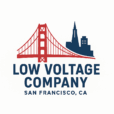What is Low Voltage in Industry?
In Low Voltage Company San Francisco, CA electricity powers everything from heavy machinery to data networks. But not all electrical systems operate at the same voltage levels. One of the most critical yet often misunderstood categories is low voltage. While high voltage systems handle massive equipment and transmission lines, low voltage powers the backbone of industrial operations such as lighting, automation, communication networks, and security systems.
Understanding what low voltage is in industry, where it’s applied, and why it matters can help facility managers, engineers, and business owners make informed decisions about infrastructure, safety, and efficiency.
Table of Contents
- What is Low Voltage in Industry?
- Voltage Classifications in Industrial Applications
- Common Uses of Low Voltage in Industry
- Benefits of Low Voltage Systems
- Standards and Regulations Governing Low Voltage
- Challenges and Limitations
- Future Trends in Low Voltage Technology
- FAQs
- Conclusion
What is Low Voltage in Industry?
In industry, low voltage refers to electrical systems that operate up to 1,000 volts AC or 1,500 volts DC. These levels are lower than medium (1kV–35kV) and high voltage (above 35kV) systems, making them safer and more practical for everyday industrial applications.
According to the International Electrotechnical Commission (IEC 60364) and the National Electrical Code (NEC), low voltage is commonly used for:
- Power distribution in facilities
- Industrial lighting
- Control systems for machinery
- Communication and data systems
- Security and surveillance infrastructure
Voltage Classifications in Industrial Applications
To better understand where low voltage fits, here’s a breakdown of industrial voltage levels:
- Extra Low Voltage (ELV): Below 50V AC or 120V DC (used for electronics, sensors, and safety systems).
- Low Voltage (LV): Up to 1,000V AC or 1,500V DC (used for power distribution, motors, lighting).
- Medium Voltage (MV): 1kV to 35kV (used for large motors, industrial plants, utility distribution).
- High Voltage (HV): Above 35kV (used for power transmission and heavy industrial equipment).
Common Uses of Low Voltage in Industry
Lighting Systems
Factories, warehouses, and production lines rely on low voltage lighting, especially LED systems, for energy efficiency and safety.
Automation and Control Systems
Programmable logic controllers (PLCs), conveyor systems, and robotics are powered and controlled through low voltage circuits.
Data and Communication Networks
Structured cabling systems, including Ethernet and fiber optic backbones, operate on low voltage to keep facilities connected.
Security and Access Control
CCTV, card access systems, and alarm networks are all low voltage technologies essential for industrial security.
Machinery Support Systems
While large motors use medium or high voltage, smaller industrial machines and support systems run on low voltage power.
Benefits of Low Voltage Systems
- Safety: Lower risk of electric shock compared to high-voltage systems.
- Cost-Effective: Less expensive installation and maintenance.
- Energy Efficiency: LED lighting, low-voltage motors, and automation reduce energy consumption.
- Scalability: Easy to expand for future industrial needs.
- Versatility: Can be applied across lighting, security, data, and automation systems.
Standards and Regulations Governing Low Voltage
Key Standards:
- IEC 60364 – International standard for low-voltage electrical installations.
- National Electrical Code (NEC) – Defines U.S. safety standards for low-voltage systems.
- OSHA Guidelines – Occupational safety standards for handling low voltage in workplaces.
- These ensure safe design, installation, and operation of industrial low voltage systems.
Challenges and Limitations
- Limited Power Capacity: Cannot handle heavy industrial loads like large motors or furnaces.
- Voltage Drop Issues: Long cable runs can reduce efficiency.
- Maintenance Needs: Requires regular inspection to prevent downtime.
Future Trends in Low Voltage Technology
- Smart Factories & IoT Integration: Low voltage networks are becoming the backbone of connected devices in Industry 4.0.
- Energy Efficiency Innovations: LED lighting and high-efficiency low-voltage motors are evolving rapidly.
- Renewable Energy Integration: Solar panels, battery storage, and EV charging stations often use low voltage systems.
- Cyber-Physical Security: Industrial security systems powered by low voltage are expanding with AI and cloud monitoring.
Frequently Asked Questions (FAQs)
Low voltage in industry is far more than a technical classification it’s the foundation of modern industrial operations. From efficient lighting and automation to data networks and security, low voltage systems ensure safe, reliable, and cost-effective industrial environments. As industries move toward smart factories and renewable energy integration, low voltage will continue to play a critical role in shaping the future of manufacturing and infrastructure.
